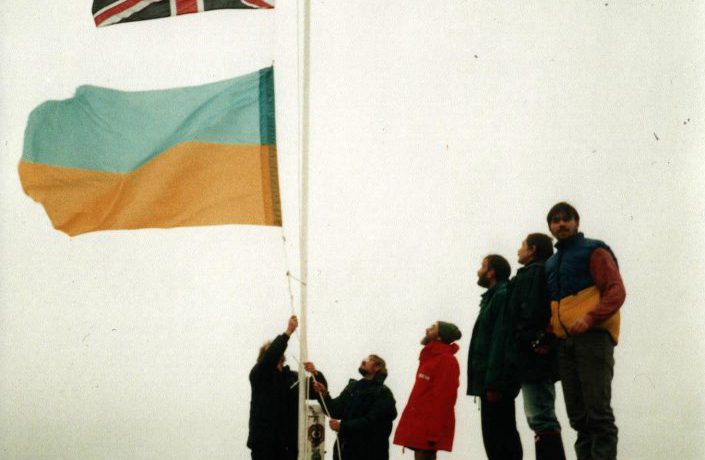On February 6, 1996, at 6:45 pm local time, the flag of Ukraine was hoisted over the Antarctic station named Akademik Vernadsky.
This date was preceded by three years of tremendous amount of work of “science officials”, diplomats, scientists, thanks to whose enthusiasm and patriotism Ukraine became an Antarctic state. This is first of all a biochemist, at that time the Ambassador of Ukraine to the United Kingdom Serhiy Komisarenko and the entire staff – only two people – of the Center for Antarctic Research established in 1993: its Director, the Corresponding Member of NAS of Ukraine Petro Gozhyk, Deputy Director Yuri Oskret (from the spring of 1994 geophysicist Gennady Milinevsky joined the CAR, who then became the Leader of the First Ukrainian Antarctic Expedition to Akademik Vernadsky station).
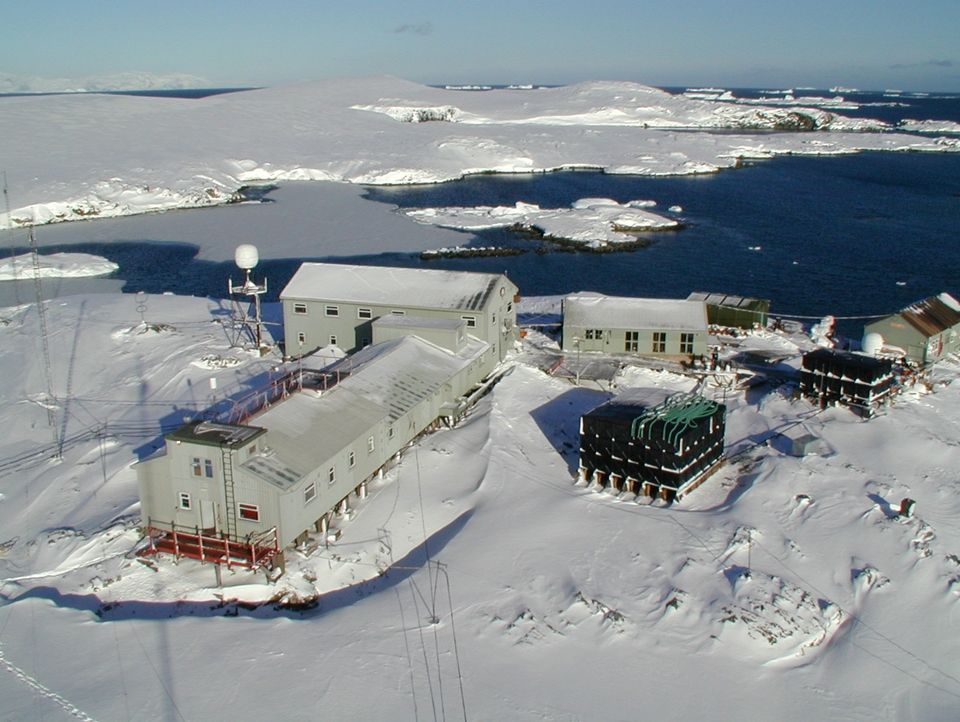
A year before the founding of CAR, on July 3, 1992, Leonid Kravchuk, the President of Ukraine, issued a Decree on Ukraine’s participation in Antarctic research, and on September 17, 1992 the Verkhovna Rada adopted a Resolution on Ukraine’s accession to the Antarctic Treaty.
Freed from the shackles of the Soviet Union, Ukraine sought to be represented in Antarctica. And she had reasonable grounds for that.
Thus, during the Soviet era, a number of scientific institutions of the Ukrainian Republic worked for Soviet Antarctic programs, many Ukrainians participated in the USSR polar expeditions, Antonov’s planes transported the cargo of the Soviet Antarctic Expeditions (RAE), the Kharkovchanka Antarctic off-road vehicles were designed specifically to conquer the South Pole, and so on. And even the first Soviet victim of the icy continent was a Ukrainian – tractor driver Ivan Khmara from Poltava region, who died in 1956 during the first RAE.
After the collapse of the Soviet Union, Russia called itself the sole successor to the Soviet Union, giving it the sole right to dispose of all assets outside the former Soviet empire, including Antarctic stations. Moscow refused Ukraine’s request to transfer one of the 12 stations.
At about the same time, the United Kingdom decided to abandon one of its stations – Faraday station, located on Galindez Island in the Argentine Archipelago (West Antarctica).
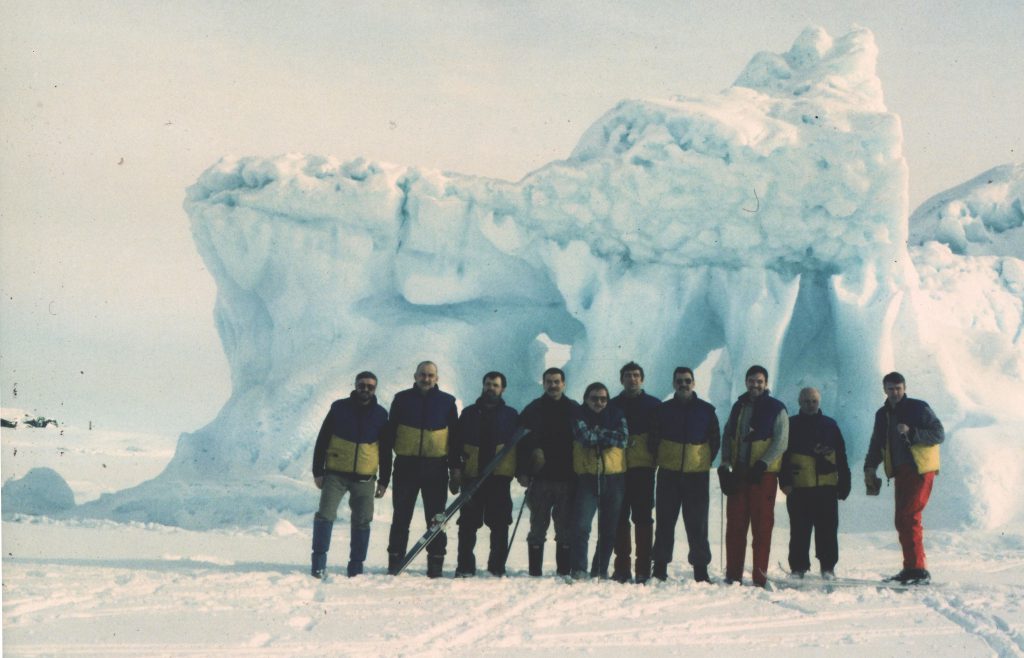
The main reason for this was the financial reason. In the 1990s, England built a new Rothera station 360 km south of Faraday, with a runway, so it was irrational to keep two stations in the same region.
“I have written letters to all influential state institutions of Ukraine stating that it is worth buying a station on this promising continent. At the same time, understanding the problems with the Ukrainian budget, during meetings with Foreign Office Minister David Davis, with whom I was well acquainted, I began to persistently pursue the idea that insist on whether the United Kingdom could help the young country with the purchase of Faraday, – recalls Serhiy Komisarenko. – The attitude of the British establishment towards Ukraine was very positive, and London began to consider such a possibility. “
At the same time, the then Ambassador had to make considerable efforts to persuade high officials in Kyiv to accept the station. The final decision was hampered not so much of the clumsiness of bureaucracies but of the catastrophic budget deficit, as the country’s economy was in a severe period of systemic crisis at the time, and it seemed somewhat difficult to maintain the station, albeit it was transferred free of charge.
The project “Return of Ukraine to Antarctica” was sponsored by the International Foundation Vidrodzhennya, which allocated 12,000 dollars.
Why did London transfer the station to Ukraine, although, according to Mr. Komisarenko, there were other countries willing to buy it, for example, South Korea? Ukraine was chosen because, among other applicants, we had a serious scientific base and scientists capable of continuing the research conducted by the British at Faraday: hydrometeorological observations, geophysical research, the study of the ozone layer, the phenomena of magnetism, and so on.
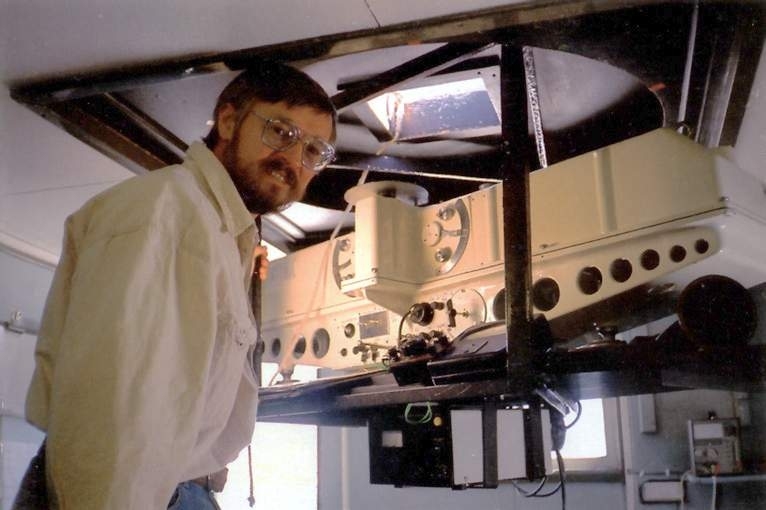
On July 20, 1995 in London, Ambassador of Ukraine Serhiy Komisarenko and British Foreign Office Minister David Davis exchanged diplomatic notes on the transfer of the Antarctic Faraday station, and CAR Director Petro Gozhyk and Director of the British Antarctic Survey (BAS) Barry Haywood signed a Memorandum of Understanding.
According to this document, the Ukrainian side has undertaken to continue the research initiated by the British and transfer the data to BAS for 10 years. Active cooperation between the NASC and BAS continues to this day.
Thanks to funds from the “Return of Ukraine to Antarctica” project, the first four Ukrainian specialists, even before the signing of the Memorandum, were able to get acquainted with the station and work there together with their English colleagues from December 17, 1994 to February 15, 1995
It should be emphasized that 1 UAE was equipped largely thanks to the efforts of philanthropists, including Ukrainian companies that provided their services or clothing for polar explorers. However, this was not enough. Fortunately, the British colleagues found spare sets of outfits, which they willingly handed over to the Ukrainians, as well as special equipment (for example, for safe movement on glaciers), skis.
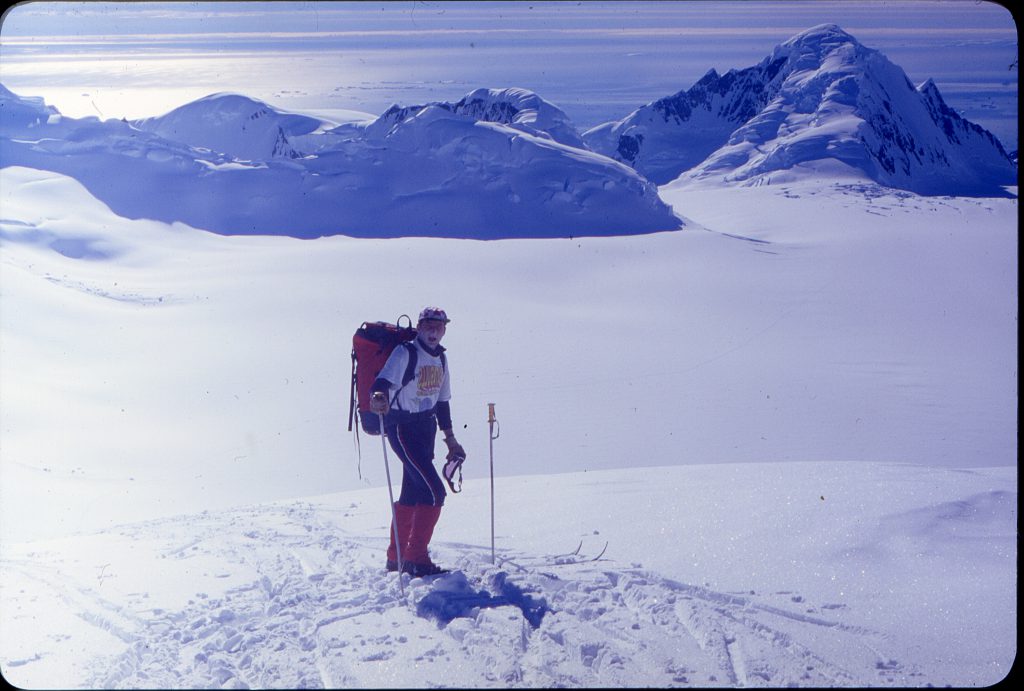
The British left not only high-quality scientific equipment and all equipment for the life support of the station, but also many things necessary for life in ice isolation: thermal underwear, special footwear, medicines, household chemicals, hygiene products, tools, food and drinks, machine tools, TV, music center, etc. “Not a single free square meter in the attic. The emergency warehouse was packed with clothes and equipment, – recalls the radio operator of 1st UAE Roman Bratchyk. – Food and drinks, except, of course, fresh vegetables and fruits, would probably be enough to last a year”.
Formation of the First Ukrainian Antarctic Expedition, which will operate at the station in 1996-1997, began in late August 1995. Although the core of its scientific members was defined earlier by the CAR – geophysicists Gennadi Milinevsky, Volodymyr Bakhmutov, meteorologist Viktor Sytov.
“There were no queues, stiff competition, and even more so people by the call “from above”, although some candidates had to be abandoned, primarily because of their health. “Reserves bench was also extremely short”, – recalls Volodymyr Bakhmutov.
The selection of participants for the 1st UAE turned out to be a rather difficult matter.
In a post-communist country, where until recently knowledge of a foreign language was not among the main virtues, it was not easy to find people who would be not only high-class specialists (there were enough of them), but also had a high level of English.
At the same time, CAR sought to use professionals experienced in polar expeditions. Thus, the 1st UAE included a glaciologist, professor of the Odessa Hydrometeorological Institute Leonyd Govorukha, who has already participated in the Soviet expeditions to the Franz Josef Land and Antarctica; meteorologist Oleksandr Yantselevych, participant of two winters in the 25th and 35th RAE; as well as the famous traveler, survival expert Sergiy Gordienko.
The advance group of the 1st UAE arrived at Faraday on November 28, 1995, to learn from the experience of the British how to maintain the station’s life support and carry out the full range of scientific research.
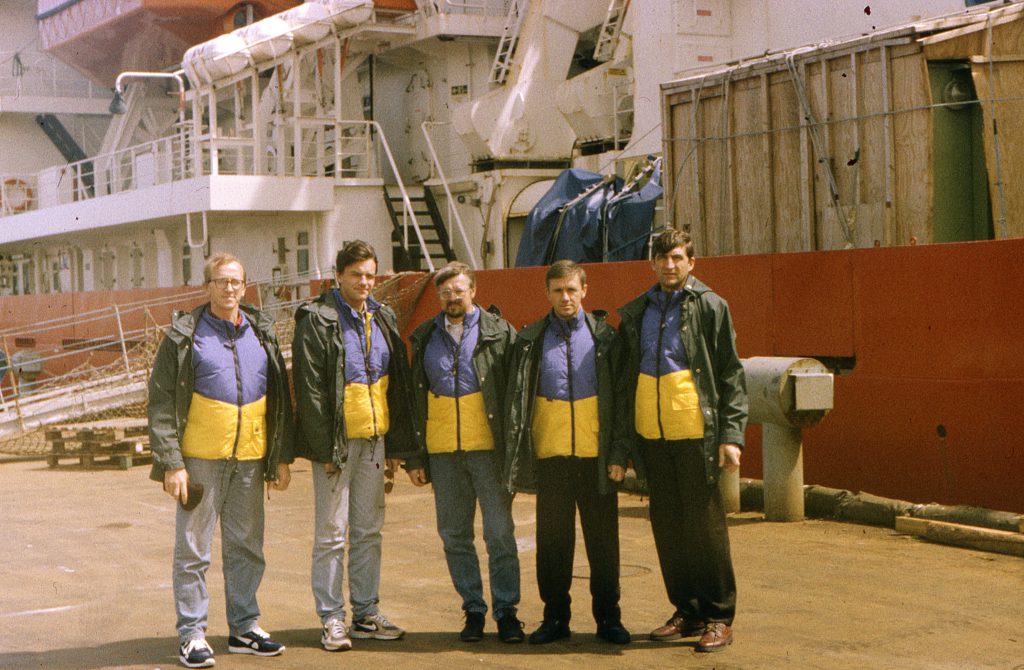
The group included: meteorologist Viktor Sytov, diesel-mechanic Andriy Sydorivsky, future station leader Gennadi Milinevsky, radio operator Roman Bratchyk, geophysicist Volodymyr Bakhmutov. The last three of the above-mentioned specialists had previously completed a two-week internship in the UK, at BAS. They reached Antarctica on the James Clark Ross research vessel serving the British Antarctic expeditions; it was leaving for Rothera station and the Faraday station along the way.
The next group of participants of the 1st UAE reached the station on January 30, 1996, the last – on February 7.
The departure of the last group almost failed, and the CAR leadership had to make an incredible effort to reach the top leadership of the state and send polar explorers to Antarctica. So, for the logistics of the last group the 1st UAE, President Leonid Kuchma has provided a presidential Tu-154. The plane made a charter flight to Argentina, carrying on board polar explorers and several people from the escort group.
As already mentioned, the 1st UAE had almost no backups, so when Viktor Sytov from the first group had unexpectedly to give up wintering because of the state of his health, they were looking for a replacement of the meteorologist on the fly, literally.
So, it happened so that the whole team got together on February 7, the day after the station became Ukrainian de facto.
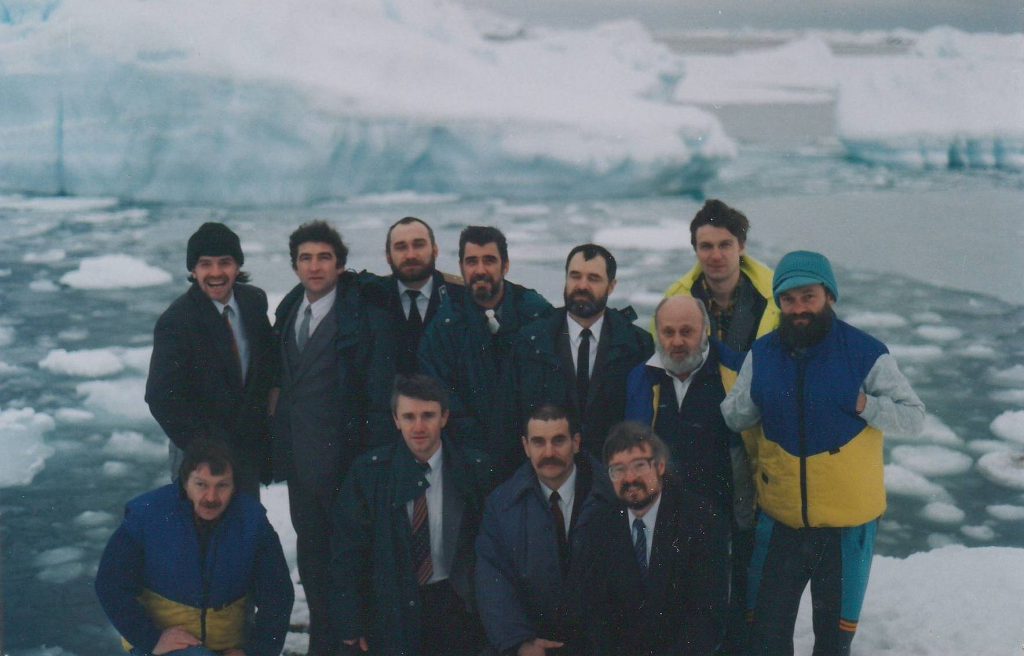
February 6, that’s the date of transfer of the station to Ukraine. On that day, the flag of the United Kingdom was solemnly taken off from the flagpole set up near the meteorological site.
The base commander of the last British Expedition, Duncan Haigh, erected it over the Wordie House (the first building at the station, erected in 1947), located on the neighboring Winter Island.
Meanwhile, the last Faraday base commander jokingly demanded a symbolic payment for the station. “I took a one-pound coin and gave it to Haigh. He ran into the workshop, grabbed the tools and immediately “immure” that coin into the countertop of the Faraday bar, which is still there,”- recalls the leader of the 1st UAE Gennady Milinevsky.
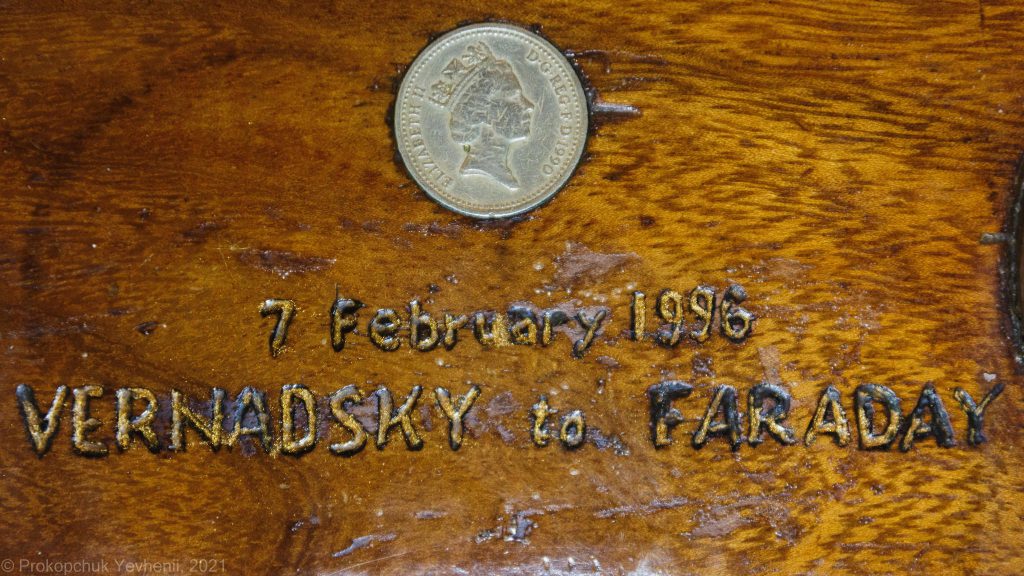
Then an act on the transfer of the station was signed and festive champagne was drunk in the Faraday bar. The British team left their signatures in the station diary, fixing the last wintering on the Faraday. Then they hurried to the helicopter, which took the polar explorers to the ship. A new era, Ukrainian, has begun at the station.
Photos from the archives of the 1st UAE members: Gennady Milinevsky, Volodymyr Bakhmutov, Roman Bratchyk, Vladyslav Tymofeiev.


